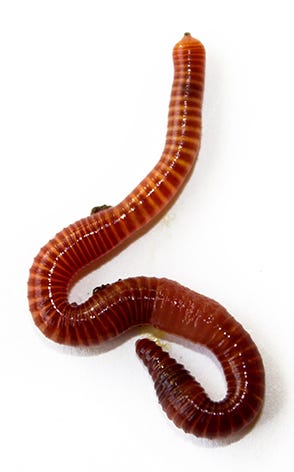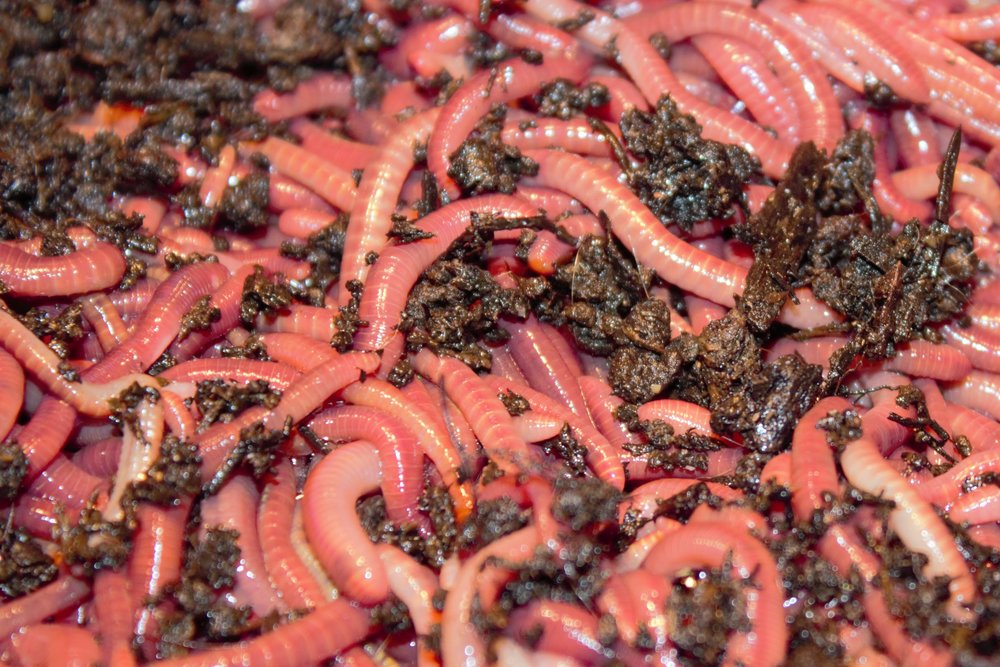Organic red worms: Perfect for compost bins
Organic red worms: Perfect for compost bins
Blog Article
Change Your Yard With Red Wigglers: Tips and Tricks
Red wigglers are not just an inquisitiveness for compost enthusiasts; they are pivotal representatives of transformation for any kind of yard. By establishing a fundamental worm container and comprehending the dietary requirements of these remarkable creatures, gardeners can dramatically boost soil quality and plant health. The procedure of converting natural waste right into abundant, fertile spreadings is both straightforward and gratifying. The real potential of red wigglers goes beyond plain composting. Checking out the subtleties of their treatment and the diverse applications of their by-products can open even higher advantages for your horticulture endeavors.

Advantages of Red Wigglers
Red wigglers, clinically called Eisenia fetida, are frequently hailed as nature's composting champs. These amazing worms serve several crucial benefits that can dramatically improve garden health and performance. To start with, they are reliable decomposers, damaging down natural material such as cooking area scraps and lawn waste into nutrient-rich vermicompost. This natural fertilizer improves the soil, promoting healthy and balanced plant development and improving soil structure.

Another noteworthy benefit of red wigglers is their capability to reduce waste. By composting natural materials that would otherwise add to garbage dump waste, they play an essential function in lasting gardening methods. Finally, incorporating these worms right into your horticulture routine can cause enhanced returns, healthier plants, and a more dynamic garden environment, making them invaluable allies for garden enthusiasts seeking to boost their ecological footprint.
Setting Up a Worm Container
Developing a worm bin is a crucial step for anyone wanting to harness the benefits of red wigglers in their gardening initiatives. An ideal worm bin can be made from various products, consisting of plastic containers, wooden pet crates, or commercially readily available worm bins. The initial factor to consider is size; a bin that is at the very least 2 feet wide, 3 feet long, and 1 foot deep is usually perfect for a little to tool number of worms.
Next, ensure appropriate drainage and air flow. Pierce holes in the bottom for excess moisture to escape and in the sides for air flow. It is necessary to produce a bedding layer, utilizing products such as shredded paper, cardboard, or coconut coir to give a comfortable environment for the worms. The bedding should be moist however not soaked, looking like a damp sponge.
Location the container in a place that keeps a constant temperature level, ideally in between 55 ° F and 77 ° F. Avoid straight sunshine or severe cool, as these conditions can damage the worms. As soon as the bin is established, permit the bedding to go for a few days before presenting the red wigglers, ensuring they have a flourishing setting in which to flourish.
Feeding Your Red Wigglers
As soon as the worm container is established and the red wigglers are introduced, correct feeding comes to be key to preserving a healthy worm populace. Red wigglers thrive on a diverse diet plan, largely containing kitchen scraps and natural products. Ideal foods include vegetable peels, fruit scraps, coffee grounds, and crushed eggshells. It is important to prevent feeding them meat, dairy products, or oily foods, as these can develop undesirable odors and draw in pests.
When presenting food, cut the scraps right into smaller pieces to help with quicker consumption. Additionally, bury the food beneath a layer of bed linens material to avoid fruit flies and other annoyances. Screen the feeding regularity; a basic guideline is to offer food every 1-2 weeks, depending on the number of worms and the quantity of food waste created.

Gathering Worm Castings
Exactly how can you tell when it's time to harvest worm castings from your bin? The readiness of worm castings is indicated by a few essential indications. The product in the container must appear dark, crumbly, and abundant in appearance, appearing like a great soil. Additionally, the initial food scraps need to be significantly damaged down or almost indistinguishable, suggesting that the worms have efficiently processed them.
Another indicator is the reduction in worm task; as the spreadings build up, worms often tend to migrate towards fresher food resources. If you discover a decrease in worm movement and the presence of spreadings at the base of the container, it's a clear signal that harvesting is due.
To harvest, delicately scoop out the spreadings, making sure to minimize disruption to the worms. A popular approach includes dividing the castings making use of light; worms have a tendency to delve far from the light, allowing you to gather the castings a lot more easily.
Collecting on a regular basis, roughly every 3 to six months, ensures a constant supply of this nutrient-rich change for your horticulture ventures. Bear in mind, the quality i was reading this of your spreadings directly affects the health of your plants.
Making Use Of Castings in Your Garden
(buy red wiggler worms)Using worm castings in your yard can dramatically improve soil health and plant development - red worms. These nutrient-rich natural plant foods offer essential macro and trace elements, enhancing the total fertility of your soil. By incorporating worm spreadings into your yard beds, you can promote beneficial microbial task, which aids in vitamins and mineral accessibility and enhances soil framework
To utilize worm castings successfully, mix them into the leading few inches of dirt before growing. This makes certain that nutrients are conveniently easily accessible to your plants. Alternatively, you can develop a nutrient-dense liquid fertilizer by soaking worm spreadings in water for a week, then using the resulting "worm tea" directly to your plants. This technique not just offers prompt nutrients but likewise urges healthy root growth.
Worm castings additionally enhance wetness retention within the dirt, decreasing the requirement for regular watering. On a regular basis incorporating worm spreadings right into your gardening regimen can lead to robust plant growth, boosted returns, and a total much healthier yard ecological community.
Verdict
Including red wigglers right into garden methods provides substantial advantages, consisting of improved soil fertility and improved plant health. By developing a worm container, supplying suitable food, and frequently gathering nutrient-rich castings, garden enthusiasts can promote a lasting ecological community. Using worm castings and "worm tea" further adds to moisture retention and nutrient schedule in the soil. Ultimately, the assimilation of red wigglers promotes an efficient and eco-friendly strategy to gardening, advertising overall ecological equilibrium.
Report this page